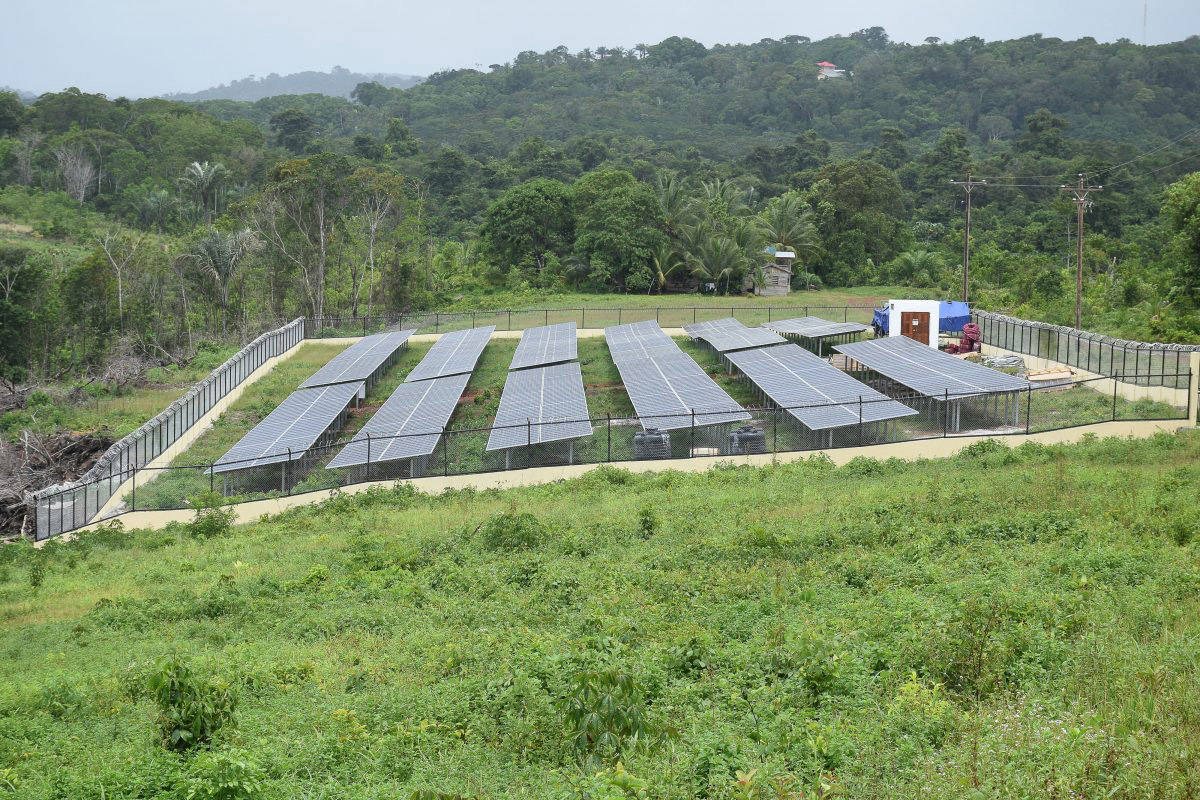The $227 million solar power farm built in Mabaruma, Region One should be up and running before Republic Day, Minister of Public Infrastructure David Patterson told Stabroek News yesterday.
Patterson, on the sidelines of the Bartica Power Plant Commissioning, explained that bids for the completion of the solar farm are currently being evaluated by the National Procurement and Tender Administration Board.
He noted that the ministry had to invite new bids to complete the project after they had terminated the services of a German contractor.
Patterson told this newspaper that 90 per cent of the work is completed and only an inverter and additional batteries have to be installed. He noted that the previous company had installed batteries with the exact capacity as the solar farm and that was not what they had asked for.
“… that is not what we wanted. The solar farm is 4.0 megawatts and the batteries is 4.0 megawatts [and] when anything happens it would trip the system. So we have procured additional batteries which would charge it up to 6 megawatts and make sure the system becomes very stable,” the Minister added. Patterson was however quick to note that the final phase of the work is being done at no additional cost since money that was approved and remained from the terminated contract is being used.
“This is being done at no extra cost, the balance from the remaining part of the terminated contract is what is being used to fund the completion. Before Republic Day it should be up and running because it is just a matter of installing the batteries and connecting it,” the Public Infrastructure Minister disclosed.The solar power farm was to be operational last August but more than a year later problems have hindered its completion.
The Mabaruma Solar Farm was described in the 2017 national budget as the first of several such farms which were to be established under the Hinterland Electrification Programme.
Minister of Finance Winston Jordan announced at the time, a budgetary allocation of almost $1 billion to implement a series of renewable energy and energy efficiency projects.
He said these interventions which are to be channelled through and managed by the Guyana Energy Agency, would include the installation of the first solar farm on a large scale in Mabaruma. The Minister had also explained that when operational, the 400-kilowatt solar farm would afford an additional 17 hours of electricity to the 3,000 residents of Mabaruma.
The Ministry in a letter to Stabroek News had explained that it terminated the contract with the German contractor due to a number of factors. “Most significantly, severe weather conditions causing damage to the electrical infrastructure – the timeframes were not met.”
Chief Executive Officer of the Hinterland Electrification Company Incorporated (HECI), Horace Williams pointed out that once the structural aspect was completed, the installation and testing aspect was commenced to verify the equipment’s performance when it was discovered that the systems were not working as required.
The contractor was engaged by the Ministry about the performance of the systems, but was reluctant to carry out further works to rectify the issues. “We ended up in a dispute with the contractor about whose responsibility it is to replace these items following the lightning strike. We concluded that the contractor was responsible because the contract stipulated that they were supposed to provide equipment to safeguard against these types of things,” Williams added in the letter.
Further, he emphasised that the Government Electrical Inspectorate conducted a test on the grounding of the lightning protection systems and found that these did not meet the specifications. As a consequence, he said, the company acknowledged that the contractor failed to meet the terms of the contract, which was subsequently terminated in September 2019, despite numerous efforts to amicably resolve the matter.
Moving forward, the CEO noted that the Guyana Energy Agency in collaboration with HECI is working to replace the damaged transformer.
The solar farm is being constructed at a cost of $227,706,890. (David Papannah)






